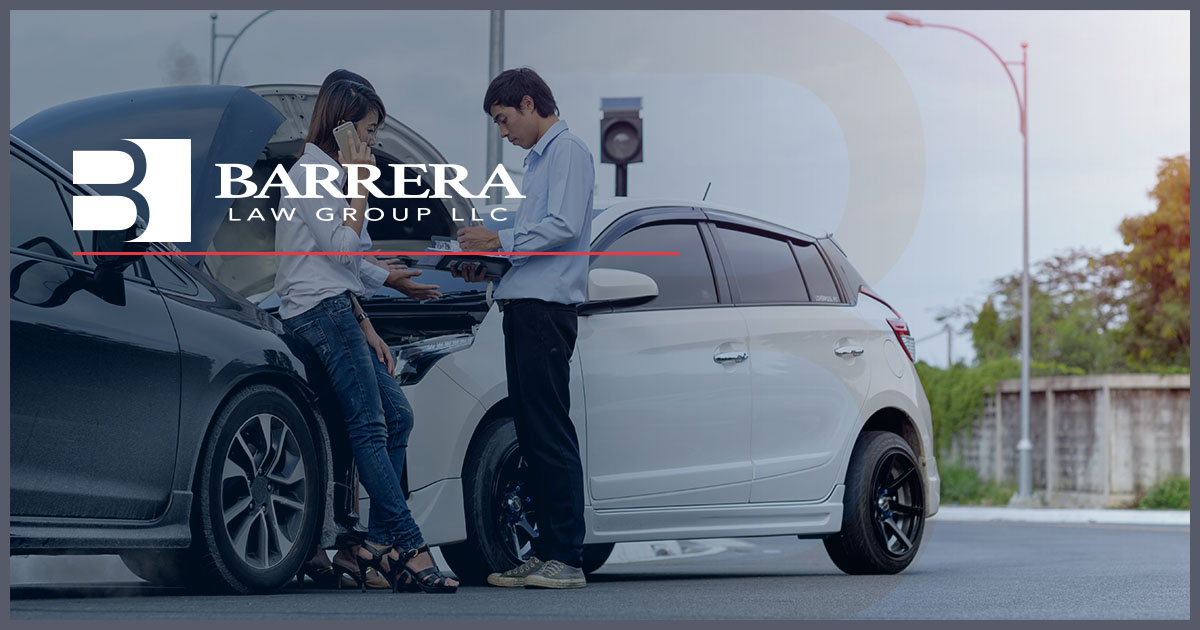
The aftermath of a car accident can be distressing and chaotic. In most cases, the police will respond to the scene, but there are other times when you might need to get the information yourself.
What do you need to collect from the other driver and witnesses?
At Barrera Law Group LLC, we know that the moments after an accident are the most stressful for anyone. However, you do need to follow a few steps to make sure you have all the information you need to file a claim. Plus, depending on the circumstances, it’s required under the law to provide information after a crash.
Let’s look at what information you should exchange after an accident.
Collecting Valuable Information
After an accident, your first priority is to make sure everyone is okay or, if injured, that they’re receiving proper medical care. Most of the time, law enforcement will come to the scene of the accident, collect information, and make a police report.
But sometimes, you’ll want to be proactive and get this information yourself. Whether you plan to work with an insurance company or contact an Albuquerque car accident lawyer, here is some vital information that you will want to collect.
Names and Contact Information
First, you should exchange names with the other driver(s) involved. This is not the time to try to place blame on anyone or get into an argument. You will want to stay calm and cooperative during this stressful time.
Always to get their name and telephone number. Your insurance company or attorney may need to reach out to them at a later date. If you have this information, contacting them in the future could be easier. An email address can also come in handy. Today, many more people are reachable by email than by phone. You can use that to send them a follow-up email after the accident.
While getting the driver’s information is imperative, don’t forget about the passengers and eyewitnesses too. If they were present at the scene, you may need their account of the accident in your case.
Once again, ask for their contact details, including names, phone numbers, and email addresses. You always want to gather all the necessary information to get a complete picture of the incident.
Driver’s License and License Plate Number
In addition to noting the driver’s name and contact information, you should also obtain information about their vehicle, like the license plate. Each license plate serves as a unique identifier for vehicles.
Even if the person who hit you claims they don’t own the vehicle, the license plate will help you connect with the owner. License plate numbers can also help when reporting the incident to the authorities or insurance companies. You might need this information if you file a police report or make a claim with your insurance company.
Along with gathering the license plate number, ask permission to take a picture of their driver’s license.
With that, you have some visual evidence of their identity and license details.
Insurance Information
Insurance information for the other driver will prove invaluable as you file a claim. If you contact your insurance, the claims adjuster will need this information to contact the other company.
Whether you file a claim with your own company or try to reach a resolution with the other driver’s insurance company, you need to have all that pertinent information, such as company number and policy number.
Even if you plan to work with an attorney, gathering this information can help make the process more smoothly for you.
Occasionally, there are accidents when the driver is not the car’s owner. If this is the case, make sure to obtain their details and information regarding their insurance policy. Having all of this information can help you expedite the claims process.
Vehicle Details
If the other driver hesitates to share their insurance information with you, at least gather their vehicle details. Once again, you will want to write down their license plate number and the make, model, and color of the car, truck, or SUV.
Consider looking for any distinguishing details or markings that can help to identify the vehicle. The front grille, rear bumper, and other exterior elements could help differentiate between similar-looking cars.
Along with that, the shape and style of the headlights or taillights, any decals or stickers on the car, or even the type of wheels or rims of the vehicle can be helpful in these instances.
Exchanging contact information, documenting license and insurance details, and accurately describing the vehicles involved are essential steps in the claims process. With this information, you reach a faster resolution and protect your rights as a driver.
However, if you need help with your claim or would rather have a professional handle the matter, we always offer a free consultation at Barrera Law Group LLC.






